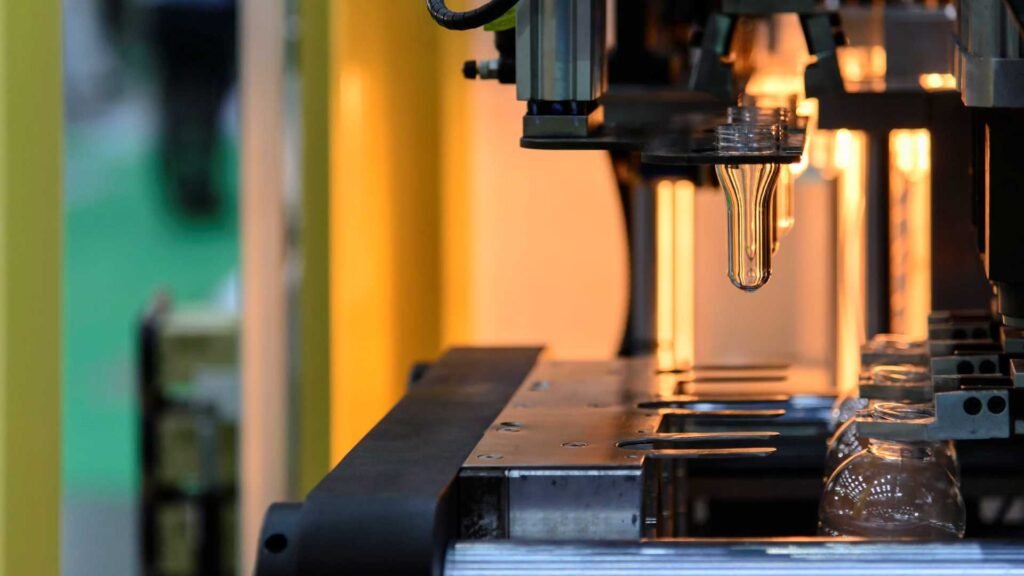In the realm of plastic manufacturing, the blow molding process is a pivotal technique employed for producing hollow plastic components. This process is integral to various industries, including automotive, packaging, and consumer goods, due to its efficiency, versatility, and cost-effectiveness. This essay seeks to construct a comprehensive understanding of the blow molding machine process, exploring its principles, methodologies, applications, and the recent advancements that have shaped its evolution.
Understanding the Basics of Blow Molding
Blow molding is a specialized manufacturing process that utilizes a hollow thermoplastic material, commonly in the form of pre-formed plastic, to create a multitude of products. The essence of this process lies in the combination of heat, pressure, and air, which collectively mold plastic into desired shapes. Although it shares similarities with other molding techniques like injection and compression molding, blow molding is unique in its ability to produce hollow parts, making it particularly suitable for items such as bottles, containers, and automotive fuel tanks.
At the core of blow molding is the use of a blow molding machine, which typically consists of a few key components: an extruder, a mold, and a blow mechanism. The process begins with the extrusion of thermoplastic material into a tube-like preform, known as a parison. Once the parison is adequately shaped, it is placed within a mold, and air is introduced at high pressure, causing the plastic to inflate and conform to the mold’s interior shape. Upon cooling, the material solidifies, and the finished product is removed from the mold.
The Process of Blow Molding
Blow molding can be categorized into three primary types: extrusion blow molding, injection blow molding, and stretch blow molding. Each method varies in its specific techniques but follows a general sequence of steps that can be analyzed for a clearer understanding of the entire operation.
1. Extrusion Blow Molding:
This process begins with the extrusion of a parison from a heated barrel, where the thermoplastic is melted and then forced through a die to achieve the desired thickness and diameter. Once the parison is extruded, it is pinched between the two halves of a mold. Air is then blown into the parison, expanding it to fill the mold cavity. After cooling, the product is ejected. Extrusion blow molding is particularly advantageous for producing large quantities of hollow items with uniform wall thickness.
2. Injection Blow Molding:
This method combines aspects of injection molding and blow molding. Initially, plastic is injected into a mold to form a preform that has already been shaped like a test tube. The preform is then moved to a second mold where air is blown in to create the final product. This technique allows for greater dimensional accuracy and surface finish, making it a popular choice for producing high-quality containers, such as cosmetic bottles and pharmaceutical packaging.
3. Stretch Blow Molding:
In this sophisticated variation, the preform is heated and then mechanically stretched both vertically and horizontally while the air is blown into it. This process enhances the clarity and strength of the final product and is especially prevalent in the production of PET (polyethylene terephthalate) bottles. The stretch blow molding process not only improves the physical characteristics of the bottles but also facilitates lightweight designs that are environmentally favorable.
Applications of Blow Molding
The blow molding process has been embraced across numerous sectors due to its ability to produce lightweight, durable, and aesthetically pleasing products. One of the most prominent applications is in the packaging industry, where blow molding is employed to manufacture plastic bottles for beverages, household cleaning products, and personal care items. The versatility offered by blow molding allows manufacturers to experiment with different shapes and sizes to meet market demands.
Moreover, blow molding finds significant applications in the automotive industry, where it is utilized to produce fuel tanks, air ducts, and other structural components. The lightweight nature of blow-molded parts contributes to overall vehicle efficiency, aligning with contemporary goals of reducing energy consumption and enhancing performance.
In the context of consumer goods, blow molding is essential for creating a diverse range of products, including toys, sporting goods, and household items. Its ability to achieve uniform quality and fast production times makes it an invaluable asset for manufacturers aiming to meet consumer expectations effectively.
Recent Advancements in Blow Molding Technology
The blow molding industry has witnessed substantial advancements, influenced by technological innovations and shifting market trends. A notable trend is the integration of automation and robotics into blow molding processes, resulting in more efficient production lines and enhanced quality control. Robotics can handle tasks such as mold changing, product ejection, and packaging, diminishing manual labor needs and significantly reducing production times.
Moreover, the adoption of advanced materials and additives has improved the properties of blow-molded products. Sustainable materials, such as biodegradable plastics and recycled resins, are gaining traction as environmental awareness increases. The ability to incorporate these materials within the blow molding process allows manufacturers to cater to consumer preferences while adhering to environmental regulations.
Furthermore, customer demand for custom designs has led to the development of advanced mold technologies. Innovations such as 3D printing have facilitated the creation of complex and intricate mold designs, reducing lead times and increasing the potential for customization.
Conclusion
In conclusion, the blow molding machine process stands as a cornerstone of modern plastic manufacturing, offering a blend of efficiency, versatility, and adaptability to various industries. By understanding its mechanisms and examining its applications, it becomes evident that blow molding continues to evolve and innovate, responding to market demands and technological advancements. As industries prioritize sustainability, efficiency, and customization, the blow molding process is poised to remain relevant and crucial in the production of hollow plastic components for years to come. The future of blow molding is not merely about producing items more efficiently but is increasingly focused on integrating sustainable practices and advanced technologies, underscoring the significance of this process in a rapidly changing world.

